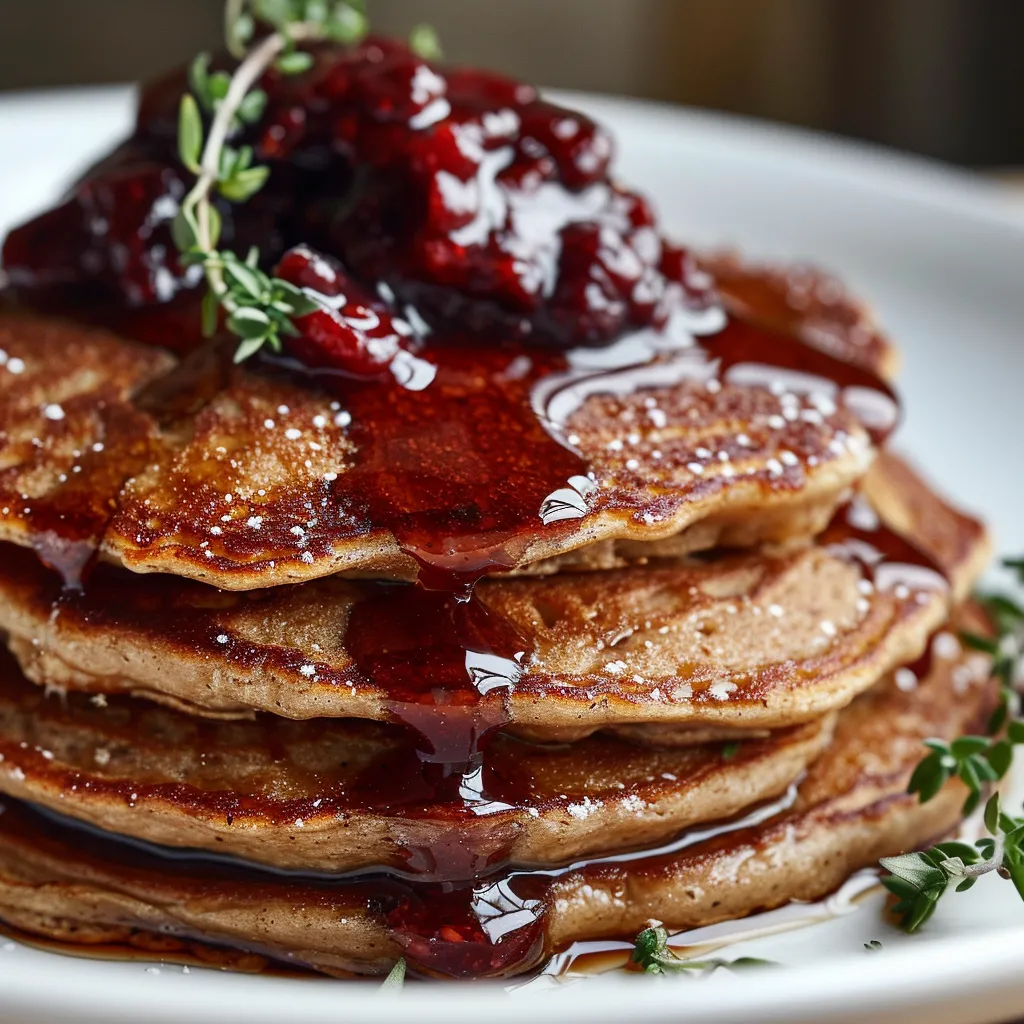 Pin it
Pin it
This classic Breton buckwheat flatbread is just the thing for a fuss-free, honest meal. It's got a subtle crunch and a nutty kick that makes it perfect for any kind of toppings, from sweet to savory.
I stumbled into this method during a Brittany trip ages ago. Now, making these is just what we do on Sundays—always with something new on top, depending on what's in season.
Tasty Ingredients
- Salt: 2.5 ml rounds out the nutty buckwheat flavor
- Baking powder: 5 ml gives it a slight lift for a dreamy bite
- Water: 1 liter keeps your batter just right, not too thick or thin
- Buckwheat flour: 500 ml brings real earthy flavor and a rich dark color
Simple Step-by-Step
- For a perfect finish:
- Gently flip your flatbread with a spatula and cook for another minute. It should have a golden look but still bend easily. Keep going until all your batter's used up, adding butter to the pan each round.
- Cooking the flatbreads:
- Warm up a pan on medium, toss in a bit of butter, then pour about 60 ml of batter right in the center. Quickly swirl the pan so it spreads out thin. Let it bubble up and the edges lift—that’s your sign, about 2 minutes.
- Mixing the batter:
- Grab a big bowl and toss in your buckwheat flour, salt, and baking powder. Pour in the water little by little, whisking hard so you don’t get lumps. Stop mixing when it’s super smooth and about as runny as pancake mix. Let it chill for half an hour so the flour soaks everything up.
Want to make these turn out extra awesome? Go for pure toasted buckwheat flour. It'll really pump up the flavor, and that deep brown color is exactly what my Breton grandma always aimed for.
Keeping & Using Leftovers
Your cooked flatbreads keep their best in the fridge for up to three days. Put parchment between each one so they don't stick together. When you're ready, heat them in a hot pan for a few seconds or slide them in a low oven till warmed through.
Classic Fillings
If you’re in Brittany, people call the go-to filling “complète”—ham, an egg, and cheese. Got a sweet tooth? Use apple butter (like I said above) or keep it super easy with sugar and lemon juice. Honestly, you can top these any way you want!
 Pin it
Pin it
Backstory
These buckwheat flatbreads have been a Breton staple for centuries. Buckwheat made its way to Brittany way back in the 1400s and grew super well in the tough soils there. Back then, the savory ones were the main part of the meal, while wheat-based crêpes finished things off sweet.
Frequently Asked Questions
- → How do I make light galettes?
To make them airy, gently mix your ingredients, especially baking powder, and avoid overworking the batter to keep it fluffy.
- → Can I swap water for another liquid?
Sure, you can use milk or plant-based milk for a softer texture, but the taste of the galettes may slightly change.
- → What’s a good topping for these galettes?
They pair wonderfully with apple butter, blackberry butter, or cinnamon-maple butter. For savory options, try cheese or grilled veggies.
- → Can I prepare the batter ahead of time?
Absolutely, you can make it a day before and store it in the fridge. Just stir it well before using.
- → How can I stop the galettes from sticking?
Use a non-stick pan with a thin layer of butter. Make sure the pan is hot enough before pouring the batter.
